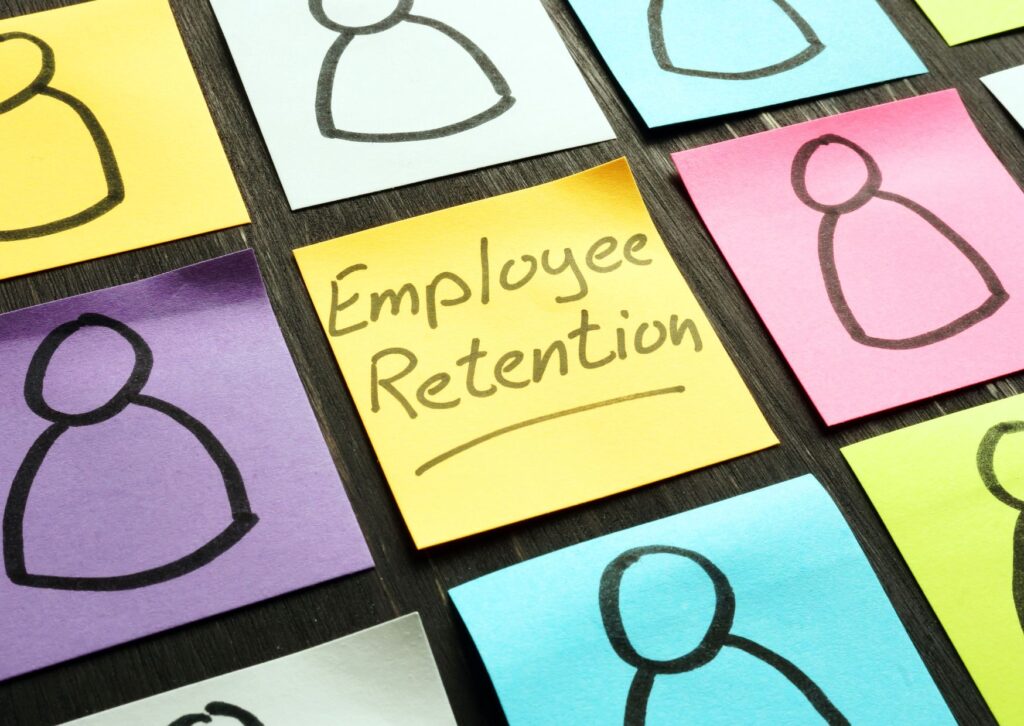10 Ways to Improve Employee Physical Health
Employee physical health is often overshadowed by the hustle and bustle of daily tasks and looming deadlines.
Yet, it remains a pivotal aspect that intertwines with every facet of work life.
As a wellbeing speaker, I’ve seen the ripple effect that good physical health can create in a workplace, from boosting individual morale to elevating team performance.
In this blog, we’ll journey through its significance, uncover ten practical strategies to nurture it, and shed light on its undeniable influence on productivity and holistic employee wellbeing.
Whether you’re at the helm of a company or at the heart of a team, this piece is crafted with you in mind.
Contents
Why is the Physical Health of Employees Important?
10 Ways to Improve Employee Physical Health
The Impact of Physical Health on Productivity and Employee Wellbeing

Why is the Physical Health of Employees Important?
Employee physical health is more than just a personal matter, it’s a crucial component that drives the success and culture of an organisation.
Let’s look at why it’s important:
Enhanced Productivity
When employees are physically fit, they have more energy.
This energy isn’t just physical, it translates to mental stamina too.
They can focus better, tackle complex problems with clarity, and stay alert.
This means fewer mistakes and more tasks accomplished in a shorter time.
Reduced Absenteeism
Regular exercise and a balanced diet boost the immune system.
A stronger immune system means fewer illnesses.
When employees aren’t frequently down with a cold or flu, they’re present at work.
Consistent team presence ensures that projects move forward without hiccups.
Boosted Morale
Physical health has a direct link to mood.
Regular physical activity releases endorphins, the body’s natural mood elevators.
When employees feel good physically, they’re more optimistic, more collaborative, and less prone to stress.
A positive individual can uplift the entire team’s spirit.

Lower Healthcare Costs
Preventative health measures, like regular check-ups and health initiatives, can detect potential issues early.
Early detection often means simpler treatments and faster recovery.
This proactive approach can significantly cut down on expensive medical procedures and long recuperation periods.
Attracting Talent
The modern workforce, especially the younger generation, values work-life balance.
They’re attracted to companies that prioritise employee wellbeing.
Offering gym memberships, organising wellbeing workshops, or even having ergonomic office furniture can be a magnet for top talent.

Long-term Employee Retention
Employees want to feel valued.
When a company invests in their physical health, it sends a clear message.
“We care about you.” This sense of being valued fosters loyalty.
Loyal employees are more likely to stick around, reducing employee turnover costs and ensuring consistent team dynamics.
Prioritising the physical health of employees can be another great way to promote a happier, healthier and more productive workforce.

10 Ways to Improve Employee Physical Health
Supporting Employee Physical Health is beneficial for both employer and employee and here are 10 ways companies can help employers can help to support their employees.
1. Regular Health Check-ups
The health of employees is essential.
Regular employee health screenings play a pivotal role in maintaining this.
These check-ups act as a preventive measure, catching potential health issues in their early stages.
When problems are identified early, they’re often easier and less costly to treat.
Employers can play a proactive role here.
By partnering with local health clinics or professionals, they can organise annual health check-up camps.
This not only ensures that employees get a comprehensive health review but also demonstrates the company’s commitment to their wellbeing.
Such initiatives can lead to a healthier workforce, reduced absenteeism, and increased productivity.
2. Promote Active Commuting
The daily commute to work doesn’t have to be a sedentary activity.
Walking or cycling offers a refreshing alternative.
These methods are not just beneficial for physical health but also for the environment.
Active commuting can help reduce carbon footprints, making it a green choice.
Employers can support this by providing necessary facilities.
Think bike racks, showers, and even incentives for those who choose to commute actively.
Events or challenges, like ‘Bike to Work’ days, can further motivate employees.
Over time, this can lead to improved cardiovascular health, reduced stress levels, and a tighter-knit community of employees who share the journey.

3. On-Site Massage
Work-related stress and muscular tension are common ailments in today’s corporate world.
One effective way to combat this is through on-site massages.
These massages, tailored for the workplace, can significantly reduce stress, ease muscle tension, and boost overall wellbeing.
They’re typically short, ensuring minimal disruption to the workday, and are performed over clothing, making them convenient for the office setting.
The benefits are great!
From reduced stress levels to fewer sick days due to ailments like headaches or back pain.
Plus, employees feel valued and cared for, leading to increased morale and loyalty.

4. Healthy Eating Initiatives
Diet plays a crucial role in physical health.
A well-balanced diet can boost energy levels, improve mood, and strengthen the immune system.
Employers can take steps to promote healthy eating by providing nutritious snacks in break rooms or organising weekly fruit deliveries.
Additionally, hosting workshops focused on nutrition can educate staff about the benefits of various foods, portion control, and the dangers of excessive sugar or salt intake.
When employees are equipped with this knowledge, they make healthier food choices, leading to better overall health.
5. Ergonomic Workspaces
The design and setup of a workspace can significantly impact an employee’s physical health.
Ergonomic furniture, such as adjustable chairs and standing desks, can prevent musculoskeletal problems.
Correct monitor height, keyboard placement, and even the type of mouse can make a difference in preventing strains and pains.
Regular assessments of workstations, combined with employee feedback, can ensure that everyone has a comfortable and health-promoting environment.
Workshops on proper posture and the importance of regular movement can further enhance the benefits of an ergonomic workspace.
And for those working from home, specific wellbeing webinars on best practice can help improve their physical health.

6. Organise Team Sports or Fitness Challenges
Engaging in physical activities as a team can be both fun and beneficial.
Organising team sports events, like a company-wide football match or a badminton tournament, can foster camaraderie while promoting physical fitness.
For those who prefer individual activities, fitness challenges such as “10,000 steps a day” or “30-day plank challenge” can be motivating.
These activities not only improve physical health but also boost team spirit and collaboration.
They give employees fitness goals to aim for which make them more enjoyable.
7. Promote Adequate Sleep
Sleep is the body’s natural way of healing and rejuvenating.
A good night’s sleep can improve concentration, boost mood, and enhance immune function.
However, in our always-on culture, many employees sacrifice sleep for work or other activities.
Employers can promote the importance of sleep by ensuring reasonable work hours and discouraging late-night emails or calls.
Workshops on sleep hygiene, discussing the importance of a regular sleep schedule, a conducive sleep environment, and the dangers of excessive screen time before bed, can be beneficial.
When employees are well-rested, they’re more productive and less prone to errors.
8. Hydration is Key
Water is essential for almost every function in our body.
The human body is approximately 60% water and keeping it hydrated can elp with many bodily functions.
From regulating body temperature to aiding digestion, staying hydrated is crucial.
Yet, many employees forget to drink water regularly, especially when engrossed in work.
Employers can promote hydration by providing easily accessible water coolers or dispensers.
Reminders, either through apps or periodic announcements, can encourage employees to drink water.
Staying hydrated can prevent fatigue, improve skin health, and even boost mood.

9. Flexible Work Hours for Physical Activities
Modern work schedules can sometimes hinder employees from engaging in regular physical activities.
By offering flexible work hours or compressed workweeks, employers can allow employees to find time for workouts, be it a morning jog, a midday gym session, or an evening yoga class.
This flexibility can be especially beneficial for parents who might want to engage in physical activities with their children.
When employees have the freedom to choose their active hours, they’re more likely to commit to a consistent fitness routine, leading to improved physical health.
10. Create a Wellness Room
A dedicated space in the office for relaxation and quick workouts can be a game-changer.
This wellness room can be equipped with basic gym equipment like resistance bands, yoga mats, and foam rollers.
Additionally, having resources like books on nutrition, posters with stretching exercises, or even guided meditation headphones can encourage employees to take short wellness breaks.
These breaks can help in muscle relaxation, mental rejuvenation, and overall stress reduction.
Over time, this small room can become a hub for employees to prioritise their health amidst their busy schedules.

The Impact of Physical Health on Productivity and Employee Wellbeing
Physical health is not just a personal concern, it’s a critical factor that influences an individual’s performance at work and their overall sense of wellbeing.
Here’s a look at its profound impact:
Boosted Cognitive Functions
Good physical health enhances cognitive abilities.
Regular exercise increases blood flow to the brain, improving memory, attention, and problem-solving skills.
When employees are physically active, they’re more alert, can process information faster, and make better decisions.
Reduced Fatigue
A well-balanced diet and adequate hydration ensure sustained energy levels throughout the day.
Employees who prioritise their nutrition and hydration are less likely to experience afternoon slumps or fatigue, allowing them to maintain consistent productivity.

Enhanced Mood
Physical activity releases endorphins, often termed as ‘feel-good’ hormones.
These natural mood lifters combat stress and promote a positive work environment.
A happy employee is more engaged, collaborative, and motivated.
Lower Absenteeism
Employees in good physical health are less susceptible to common illnesses like colds or the flu.
Fewer sick days mean consistent work progress and reduced disruptions in team projects.
Improved Team Dynamics
Physical wellbeing often leads to better interpersonal relationships.
Employees who are physically fit and active tend to have better stress management skills, leading to healthier interactions with colleagues.
Increased Job Satisfaction
When employers promote physical health, be it through on-site massages or wellbeing workshops, employees feel valued.
This sense of appreciation and care boosts job satisfaction, loyalty, and overall morale.
Long-Term Health Benefits
Regular physical activity and a balanced diet reduce the risk of chronic diseases like heart disease, diabetes, and hypertension.
Healthy employees are less likely to face long-term health issues, ensuring a stable and experienced workforce for the company.
The physical health of employees is linked to their performance, productivity, and overall sense of wellbeing.
Investing in and promoting physical health is not just beneficial for the individual but is a strategic move that drives the success and growth of an organisation.

As we’ve explored, it’s an important factor that influences not just individual wellbeing but the broader tapestry of workplace dynamics, productivity, and morale.
Prioritising employee physical health isn’t just a kind thing to do.
It’s a strategic investment with dividends of a thriving, engaged, and vibrant workforce.
As we navigate the evolving landscape of work, let’s champion health as our ally, propelling us toward collective success and thriving employee wellbeing.
Author
Tyler Lowe – Health & Wellbeing Speaker
BSc Sport & Exercise Rehabilitation


